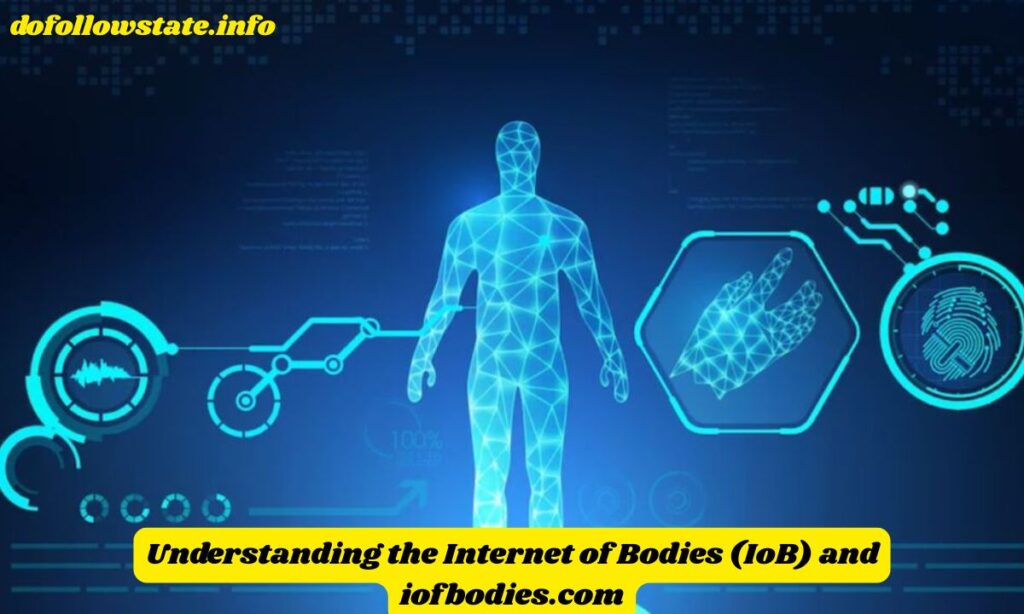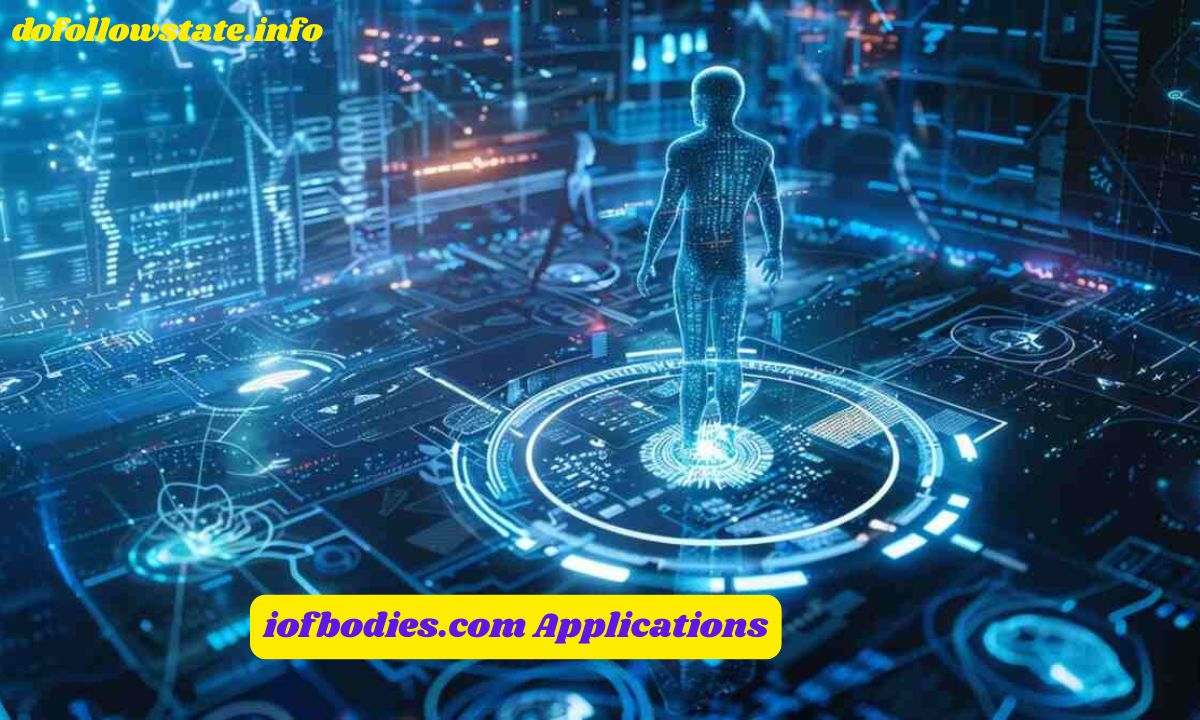Technology is changing how we live and work. The Internet of Bodies is making this change even bigger. iofbodies.com shows us how smart technology connects with our bodies. This new field uses smart sensors and wearable devices to track our health in real time.
The world of IoB technology is growing fast. More people want to know about biometric monitoring and connected health solutions. This article explains how these technologies work and why they matter for your future.
Understanding the Internet of Bodies (IoB) and iofbodies.com
The Internet of Bodies takes smart technology one step further than regular IoT devices. While smart home gadgets connect to the internet, IoB technology connects directly to your body. iofbodies.com serves as your guide to this exciting new world.

Smart sensors can now track your human physiology 24 hours a day. These devices collect real-time data about your heart rate, sleep patterns, and activity levels. Biometric monitoring helps doctors and fitness experts understand your body better than ever before.
iofbodies.com explains how wearable devices and implantable technology work together. The platform covers everything from fitness trackers to medical implants. Users learn about artificial intelligence and machine learning applications in healthcare.
The website helps people understand data privacy and cybersecurity concerns too. These topics matter when devices collect sensitive information about your body and health.
READ THIS BLOG: Crypto30x.com Ocean: Revolutionizing Blockchain Technology and Crypto Trading
Key Applications of iofbodies.com in Modern Technology
iofbodies.com covers five main areas where IoB technology makes a real difference. Each application shows how smart sensors improve daily life. The platform explains complex topics in simple terms that anyone can understand.
These applications use predictive analytics to help users make better decisions. Artificial intelligence processes the data from body sensors to provide useful insights. The results help people live healthier and safer lives.
1. Healthcare and Medical Diagnostics
Remote healthcare is changing how doctors treat patients. Continuous monitoring through wearable devices helps track chronic conditions like diabetes and heart disease. Patients no longer need to visit hospitals as often for routine check-ups.
Health diagnostics become more accurate with real-time data collection. Doctors can spot problems early and adjust treatments quickly. Personalized medicine uses biomarker analysis to create treatment plans that work better for each patient.
Smart sensors in medical implants can automatically adjust medication levels. This adaptive systems approach helps manage chronic disease management more effectively. Patients feel better and stay healthier with less effort.
Digital health platforms connect patients with their healthcare teams instantly. Biometric authentication keeps medical records secure while allowing quick access when needed.
2. Fitness and Sports Performance Enhancement
Fitness tracking has evolved beyond simple step counters. Modern wearable devices monitor muscle activity, hydration levels, and recovery rates. Athletes use this data for performance optimization and injury prevention.
Motion tracking technology analyzes how you move during exercise. This helps correct form and reduce the risk of getting hurt. Performance enhancement comes from understanding your body’s limits and capabilities.
Professional sports teams use IoB technology to monitor player fatigue and stress levels. Predictive analytics help coaches decide when players need rest. This approach keeps athletes healthy throughout long seasons.
Health optimization extends beyond professional sports. Regular people use these tools to improve their daily fitness routines and achieve personal goals.
3. Workplace Safety and Industrial Efficiency
Occupational health improves dramatically with smart sensors in the workplace. Construction workers wear wearable devices that monitor fatigue and environmental dangers. These tools prevent accidents before they happen.
Ergonomic monitoring helps office workers maintain good posture and avoid repetitive strain injuries. Environmental sensing detects harmful chemicals or extreme temperatures in factories. Workers receive instant alerts about potential hazards.
Workplace safety technology saves lives and reduces insurance costs for companies. Real-time data helps supervisors make quick decisions about worker assignments and break schedules.
Physiological responses to stress and fatigue are now measurable and actionable. This data helps create safer, more productive work environments for everyone.
4. Smart Living and Home Automation
Home automation systems now respond to your body’s needs automatically. Sleep analysis technology adjusts room temperature and lighting based on your sleep cycles. Your home becomes truly smart by understanding your physiological responses.
Stress detection sensors can trigger relaxation modes in your living space. Lights dim and calming music plays when you need to unwind. Adaptive systems learn your preferences and adjust accordingly.
Smart sensors in the home can monitor air quality and adjust ventilation systems. This environmental sensing helps people with allergies or respiratory conditions breathe easier.
Biometric monitoring at home provides valuable health insights between doctor visits. This continuous tracking helps identify trends and potential health issues early.
5. Rehabilitation and AI-Driven Physical Therapy
Rehabilitation devices use motion tracking to monitor patient progress during recovery. Physical therapists get detailed data about range of motion and muscle engagement. This information helps create better treatment plans.
Artificial intelligence analyzes movement patterns to provide real-time feedback during exercises. Patients recover faster when they receive immediate guidance about their form and effort levels.
Smart sensors track improvements over time and adjust therapy programs automatically. This personalized medicine approach helps each patient reach their recovery goals more efficiently.
Connected health platforms allow therapists to monitor patients remotely between appointments. This continuous support improves outcomes and reduces the need for frequent clinic visits.
Ethical and Security Challenges
Data privacy remains a major concern with IoB technology. Personal health information needs strong protection from hackers and unauthorized access. Cybersecurity measures must keep pace with advancing technology.

User permissions should give people control over their own biometric data. Companies need clear data governance policies that protect user rights. Biometric authentication systems must balance security with user convenience.
Questions about data ownership and sharing create complex ethical dilemmas. Who can access your health data and under what circumstances? These issues require careful consideration and regulation.
iofbodies.com addresses these concerns by promoting responsible development and implementation of IoB technology. Education and awareness help users make informed decisions about their digital health privacy.
READ THIS BLOG: Gamerxyt.com Categories: Finding the Best Content for Every Gamer
The Future of iofbodies.com and IoB Technology
The future holds exciting possibilities for Internet of Bodies applications. Predictive analytics will become more accurate at identifying health risks before symptoms appear. Machine learning algorithms will provide increasingly personalized recommendations.
Connected health ecosystems will integrate seamlessly with daily life. Your car might adjust the seat position based on your posture data from work. Your gym equipment could customize workouts based on your sleep quality from the night before.
Digital health platforms will become the standard for managing chronic conditions and maintaining wellness. Health optimization will shift from treating illness to preventing it through continuous monitoring and early intervention.
iofbodies.com will continue leading discussions about responsible innovation in this rapidly evolving field. The platform helps ensure that technological advancement serves human well-being above all else.
Frequently Asked Questions
What is the Internet of Bodies (IoB)?
IoB technology connects sensors and devices directly to the human body to collect and analyze biological data in real time.
How does iofbodies.com help users understand IoB applications?
iofbodies.com provides educational content about wearable devices, smart sensors, and their applications in healthcare, fitness, and daily life.
What are the main privacy concerns with IoB technology?
Data privacy and cybersecurity risks arise from collecting sensitive biometric information that could be stolen or misused by unauthorized parties.
How do IoB devices improve healthcare outcomes?
Continuous monitoring and predictive analytics help doctors detect problems early and provide personalized medicine based on individual patient data.
What industries benefit most from IoB technology?
Healthcare, fitness, manufacturing, and smart home industries see the biggest improvements from biometric monitoring and real-time data collection systems.
Conclusion
iofbodies.com applications represent a fundamental shift in how technology integrates with human life. From remote healthcare to workplace safety, these innovations improve quality of life across multiple domains. Smart sensors and wearable devices provide unprecedented insights into human physiology and daily activities.
The future of IoB technology depends on balancing innovation with responsibility. Data privacy and cybersecurity concerns must be addressed as these systems become more widespread. iofbodies.com serves as an essential resource for understanding both the opportunities and challenges ahead.
As biometric monitoring becomes commonplace, we move toward a world where technology truly serves human needs. The Internet of Bodies promises better health, safer workplaces, and more responsive living environments for everyone.

SEO expert focused on boosting online visibility and driving organic traffic. Passionate about data analysis, strategy, and the latest digital marketing trends.
















